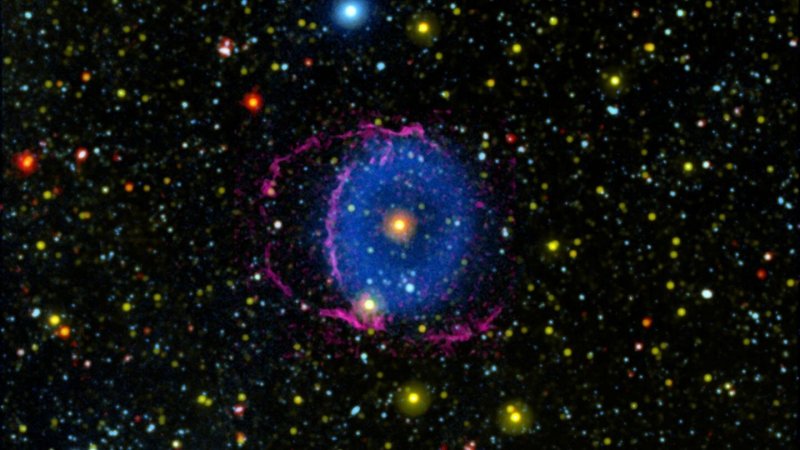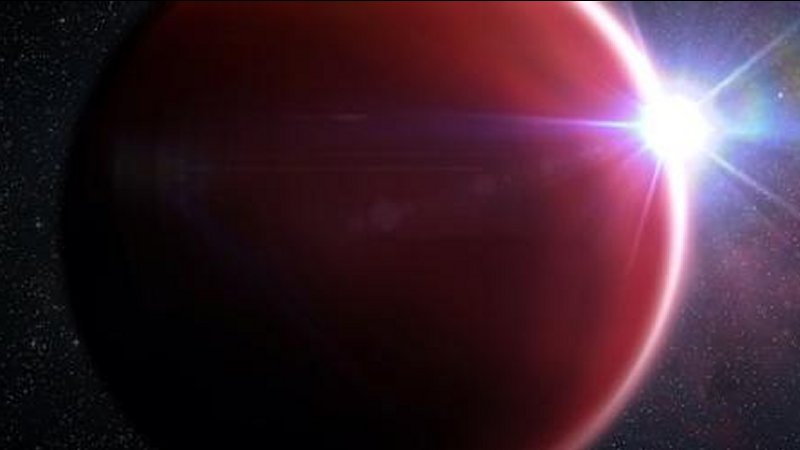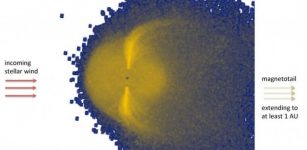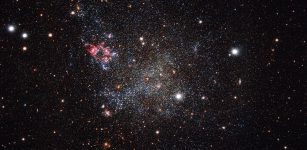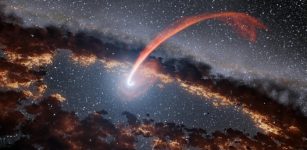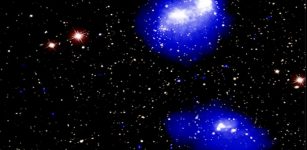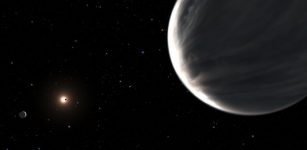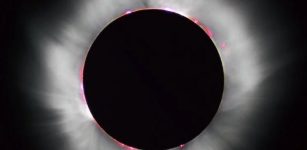Chemically Peculiar Star HD74423 Is Pulsating Only On One Side
Eddie Gonzales Jr. – MessageToEagle.com – A star dubbed HD74423 showing an anomalous behavior has been spotted by amateur astronomers.
This celestial object that pulsates on just one side is located in the Milky Way about 1500 light-years from Earth.
 An artist’s impression of the star with its tidally locked red dwarf companion. Credit: Gabriel Pérez Díaz (IAC)
An artist’s impression of the star with its tidally locked red dwarf companion. Credit: Gabriel Pérez Díaz (IAC)
“What first caught my attention was the fact it was a chemically peculiar star,” said co-author Dr. Simon Murphy from the Sydney Institute for Astronomy at the University of Sydney. “Stars like this are usually fairly rich with metals—but this is metal-poor, making it a rare type of hot star.”
The star is the first of its kind to be found and astronomers believe to find many more similar systems in the universe.
HD74423 is about 1.7 times the mass of the Sun and is one of the stars in a binary star system with a red dwarf. Its close companion distorts the oscillations with its gravitational pull.
See also:
A New Type Of Pulsating Star – Discovered
Rare, Pulsating Star Identified 7,000 Light Years Away In Pegasus Constellation
“We’ve known theoretically that stars like this should exist since the 1980s,” said co-author Professor Don Kurtz from the University of Central Lancashire in Britain.
“I’ve been looking for a star like this for nearly 40 years and now we have finally found one,” said Professor Kurtz, who is the inaugural Hunstead Distinguished Visitor at the University of Sydney.
Stars that pulsate have been known in astronomy for a long time. Our own Sun dances to its own rhythms. These rhythmic pulsations of the stellar surface occur in young and in old stars and can have long or short periods, a wide range of strengths and different causes.
Amateur astronomers who studied HD74423 used TESS data that was made available to the public, and NASA’s TESS satellite is focused on searching for alien worlds and those that could support life.
The orbital period of the binary system, at less than two days, is so short that the larger star is being distorted into a tear-drop shape by the gravitational pull of the companion.
“The exquisite data from the TESS satellite meant that we could observe variations in brightness due to the gravitational distortion of the star as well as the pulsations,” Professor Gerald Handler from the Nicolaus Copernicus Astronomical Centre in Poland and lead author said.
Additionally, the team observed that the strength of the pulsations depended on the aspect angle under which the star was observed, and the corresponding orientation of the star within the binary.
This means the pulsation strength varies with the same period as that of the binary.
“As the binary stars orbit each other we see different parts of the pulsating star,” said Dr. David Jones at the Institute of Astrophysics of the Canary Islands, and co-author of the study. “Sometimes we see the side that points towards the companion star, and sometimes we see the outer face.”
The findings are published in Nature Astronomy.
Written by Eddie Gonzales Jr. – MessageToEagle.com Staff

